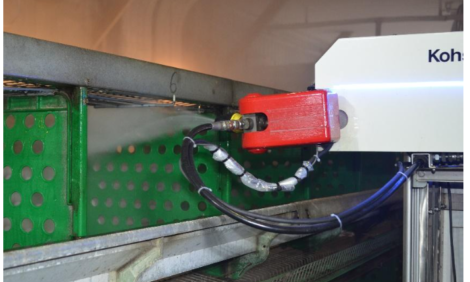



Comparison of Bones of Four Strains of Laying Hens Kept in Conventional Cages and Floor Pens
There were some differences in bone measurements between genetic strains, according to researchers based in Canada, but there were no significant differences in bone density. The radius in hens kept in floor pens was heavier than in those kept in cages but the tibia was not.The maintenance of bone strength has been an important issue in the debate over cage use for laying hens. according to Fred Silversides of the Agriculture and Agri-Food Canada Research Centre in Agassiz, British Columbia and co-authors there and at the universities of British Columbia and Alberta. Bone strength depends on adequate mechanical load and cages restrict movement, they report in their paper published in the current issue of Poultry Science.
Four laying crosses (Lohmann White, Lohmann Brown, H&N White and Rhode Island Red × Barred Plymouth Rock cross hens) were housed in conventional cages or in floor pens equipped with perches and nest boxes to measure the effect of the housing system on bone strength.
Approximately 15 hens of each genotype from each housing system were killed at 50 weeks of age and the radius and tibia of each were removed for analysis.
There were no differences between the Lohmann White and H&N White (White Leghorn) hens, likely because of their similar genetic background. The Lohmann Brown and the cross hens (brown-egg layers) were larger and they had heavier bones but the bone density was not different from that of the other lines.
The radius was heavier for hens kept in floor pens than for those kept in cages, but the tibia was not. When hens were kept in floor pens, both bones had greater cortical bone density and cross-sectional area but the difference between housing systems in cortical bone cross-sectional area was much greater for the radius than it was for the tibia.
Although the movement of hens in cages is limited, they spend a great deal of time standing, which puts a mechanical load on the tibia, according to Silversides and co-authors. Hens in floor pens are able to stretch their wings or fly, they say, in contrast to hens kept in cages, which likely explains why the difference between housing systems in cortical bone was greater for the radius than for the tibia.
Reference
Silversides F.G., R. Singh, K.M. Cheng and D.R. Korver. 2012. Comparison of bones of four strains of laying hens kept in conventional cages and floor pens. Poultry Science, 91(1): 1-7. doi: 10.3382/ps.2011-01453
Further Reading
| - | You can view the full report (fee payable) by clicking here. |
January 2012









